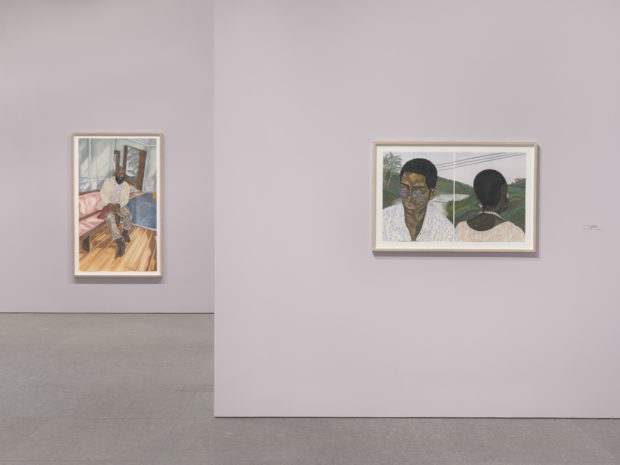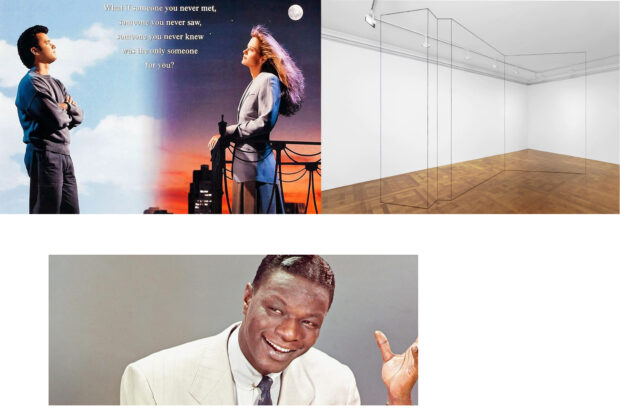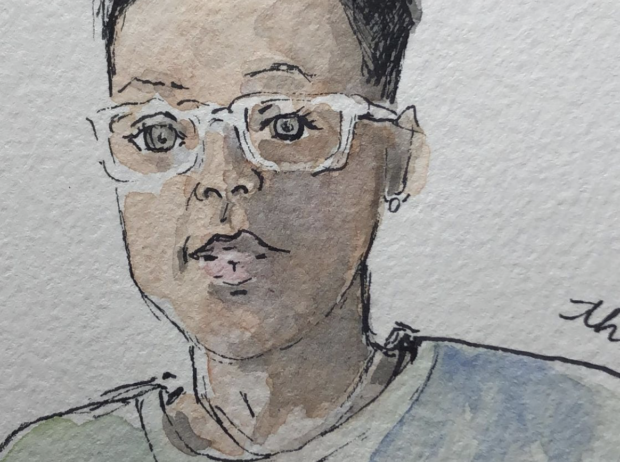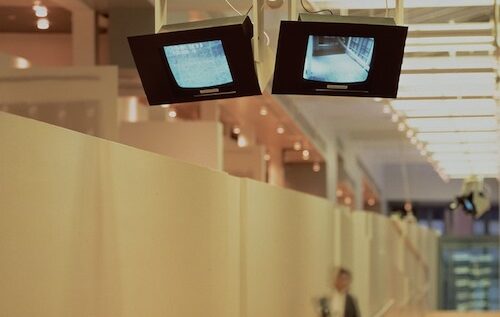Okwui Enwezor gave his first talk of the Kirk Varnedoe Lecture Series on Tuesday, February 21, called “Setting the Stage: From Postcolonial Utopia to Postcolonial Realism.” His series is titled “Episodes in Contemporary African Art,” which foreshadows a methodology centered not on grand narratives but on case studies that can enliven our understanding of an emerging field behind which Enwezor himself has been the driving force.
Today, we are all well aware that contemporary art has become a “global” phenomenon; from Chelsea to Venice we confront cutting-edge works by non-Western artists. William Kentridge, El Anatsui, Yinka Shonibare MBE, and Ghada Amer have all held significant retrospectives in recent years, in addition to countless others featured in group exhibitions. However, the “globalization” of contemporary art didn’t happen overnight, and as art historians we still lack a comprehensive understanding of the transition from “traditional” to “contemporary” in many parts of the world, especially Africa. Hence, Enwezor’s inaugural lecture, aptly titled “Setting the Stage,” offered a timeline against which the emergence of contemporary African art can be set.


Enwezor premised his talk around an inversion of the dictum that begins E.H. Gombrich’s The Story of Art—“There is no art as such, there are only artists”—proposing that when it comes to Western reception of African art, the reverse is often assumed; namely, that there are no African artists as such, only African art. African art has often been associated with ritual and collective production, in opposition to Western art history’s preoccupation with artistic genius, the “Master,” and individual oeuvres.
Theorizing “Contemporary African Art” as a discursive field then entails a clarification of what the terms “contemporary” and “African” typically signify, and to this point Enwezor proposed two questions: 1) What is Contemporary African Art? and 2) When did Contemporary African Art as a term emerge?
Enwezor enlisted two general definitions of “contemporary” art: For Terry Smith, contemporary art is preoccupied with being “within its time,” or with contemporaneity, while Arthur Danto frames contemporary art as post-historical, “liberated from the succession of historical periods bound to style.” While Smith and Danto differ in their approaches, they each position the contemporary against narratives of artistic lineage that comprise the canon, and against continuity with the past. Enwezor pushed the limits of this definition by offering an object featured in Susan Vogel’s 1987 exhibition Perspectives: Angles on African Art, held at the Center for African Art (now the Museum for African Art). The figural sculpture carved from wood betrays the stylistic character of traditional Yoruba art, yet the motif—“Man with Bicycle”—is inherently modern: the artist depicts day-to-day life rather than traditional “ahistorical” religious imagery. If contemporary art is preoccupied with its own time, then this object proves the existence of Contemporary African Art as early as the turn of the 20th century.

Enwezor’s lecture proceeded to interweave political history with concurrent artistic production, outlining the development of African postcolonial subjectivity. During and after decolonization in the mid-century, he explained, a sense of “postcolonial utopia” swept across the continent. In the wake of the Second World War, one nation after another achieved independence, and a period of significant creative production ensued through the 1960s, evidenced by the work of painters Ibrahim El Salahi (Sudan) and Skunder Boghossian (Ethiopia), among others. Modernity converged with African nationalisms, resulting in new artistic practices that fuse disparate aesthetic traditions and exude the sense of possibility that accompanied the end of colonization.

However, this “postcolonial utopia” proved to be short lived. The period of the early 1970s-1990s was marked by extreme economic crisis due to neoliberal economic interventions and the Structural Adjustment Policies (SAPs) that privatized third-world markets and devalued currencies, causing utter devastation across Africa. The optimism of the postwar era faded into disenchantment and economic stagnation. African artists produced powerful works in response to this crisis. Cheri Samba’s paintings portray the bleak juxtaposition of wealth and poverty in quotidian Congolese settings, while South African artists distilled in their works the sense of violence and trauma that colored the late 1980s. Enwezor refers to these decades as a period of “postcolonial realism,” signaling an emotional fall from euphoria and perhaps also citing the tendency for artists to work in a realistic style that enabled their works to communicate effectively to viewers.
In establishing this cohesive historical timeline, Enwezor contextualized the progression of African contemporary art from the postwar period through today.


For me, the talk provided some food for thought about global contemporary art at large and the well-known problem of categorization. Art historians have struggled with the construction of new narratives of contemporary art: either the extant canon remains and non-Western artists are “inserted” into it as they gain prominence, or these artists are bound to localized lineages (i.e. Chinese or Middle Eastern contemporary art) that they may not identify with at all. Contemporary artists from Africa, then, teeter between either end of a spectrum that separates the terms “African Art” and “Contemporary Art.”
Although contemporary art history has grown more rhizomatic in light of these issues since the 1990s, narratives of Western modernism in the early and mid-twentieth century don’t seem likely to budge. But Enwezor’s proposal, outlined not only in this lecture but also in his recent publications Contemporary African Art Since 1980 and Antinomies of Art and Culture, introduces the possibility of multiple coexisting modernities, which expands the limits of Modern art and allows it to shift and accommodate many cultural histories. It is exciting to consider parallel modernities that brush against one another dialogically and result in a diversity of creative possibilities that do not invalidate but rather illuminate one another.

Enwezor refuted the myth that traditional African art is “ahistorical”; for centuries Africans have been in contact with the West through the spread of Islam and Christianity, evidenced in “traditional” objects such as Benin bronzes that portray Portuguese soldiers. As he stated, “tradition denotes the continuous flow of change, transformation, and continuity that enlivens and strengthens the artistic archive of African artists.” Thus his project is one of reconfiguring our understanding of African art in the past just as much as it seeks to reshape the future. Through this lens we may envision an art history in which Africa and the West (as well as other cultures) interact and converge, allowing for discontinuities even alongside major movements.
Thus, Enwezor’s opening question—What is Contemporary African Art?—remains unanswerable, because the term itself encompasses a multiplicity of transnational artists whose works reflect individual experiences and diverse personal histories.









Be First to Comment